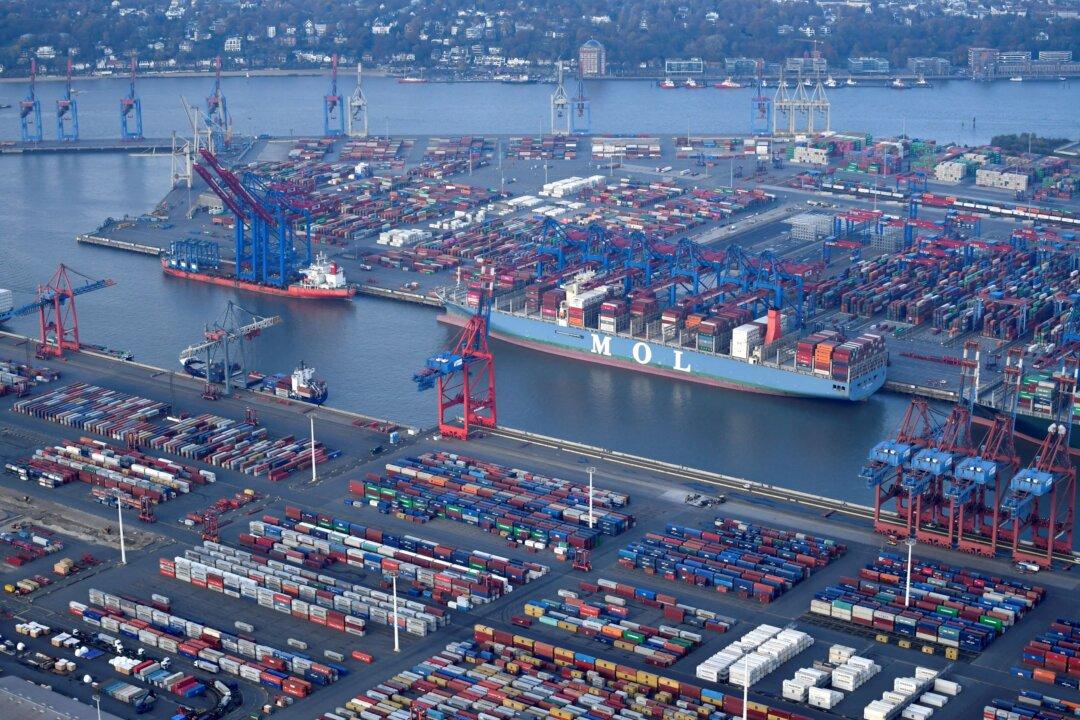BERLIN—German exports rose slightly more than expected in August despite a cooling global economy, rising interest rates and material shortages, the statistics office said on Wednesday.
Stronger demand from the United States and China helped push exports to 133.1 billion euros ($132.59 billion) in August, up 1.6 percent from the previous month.





